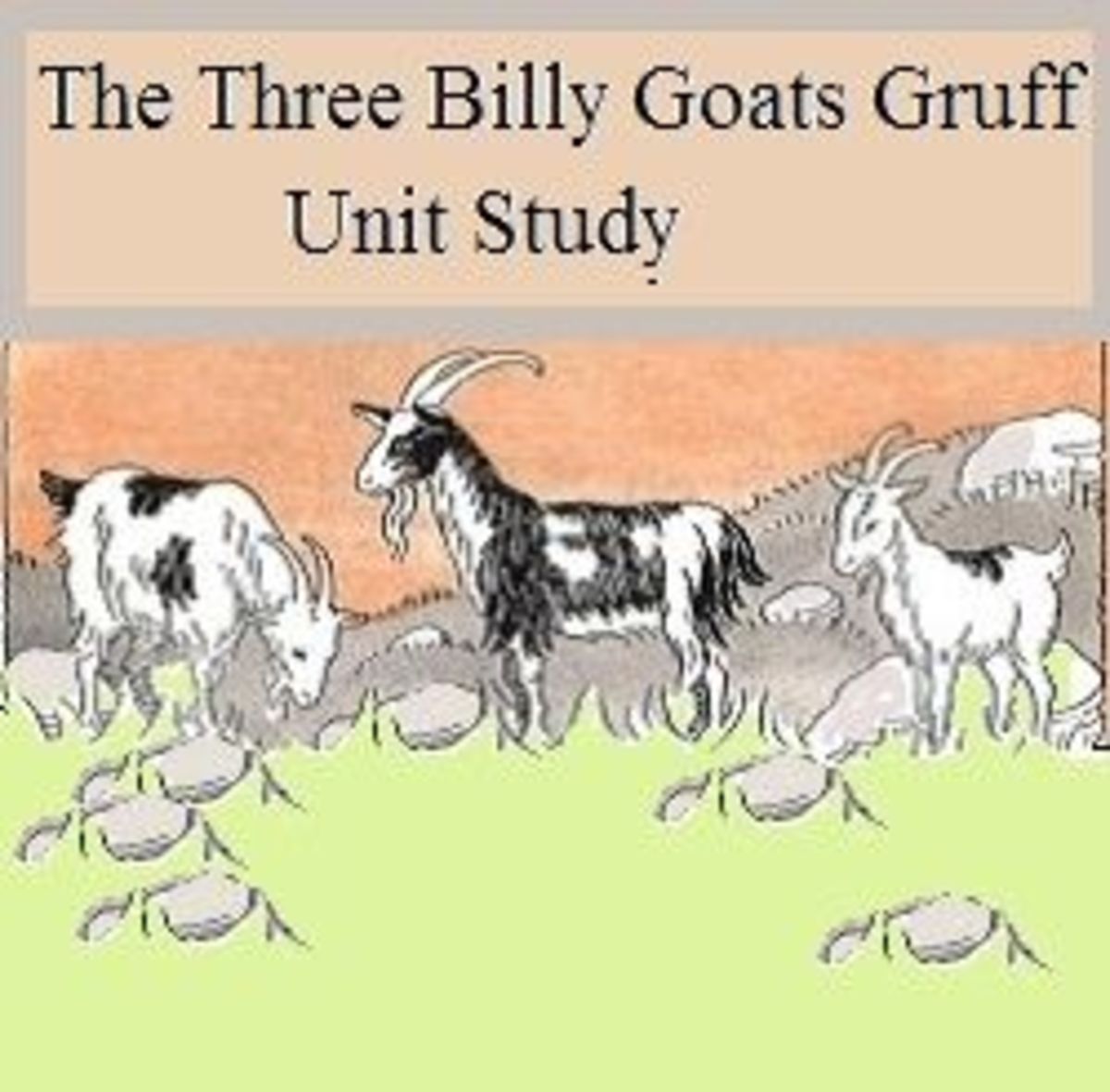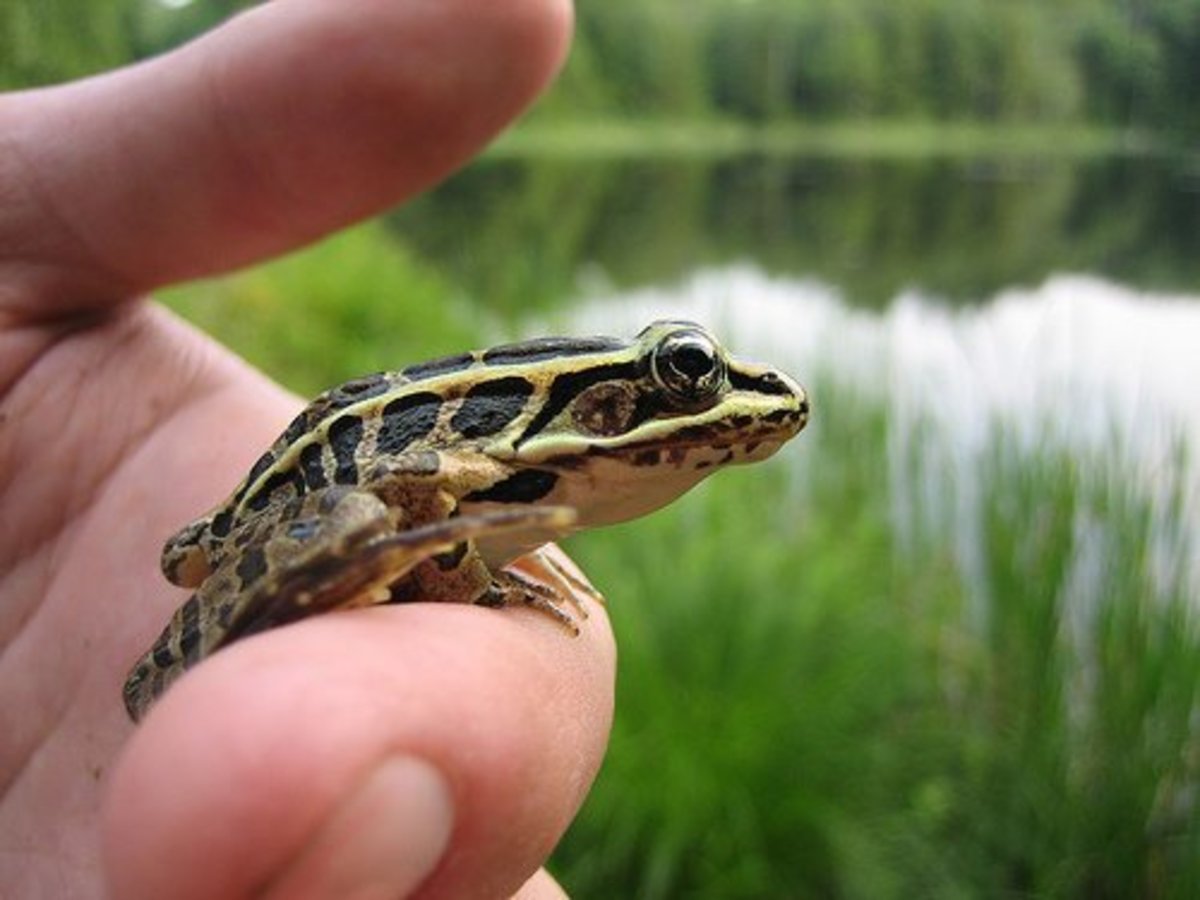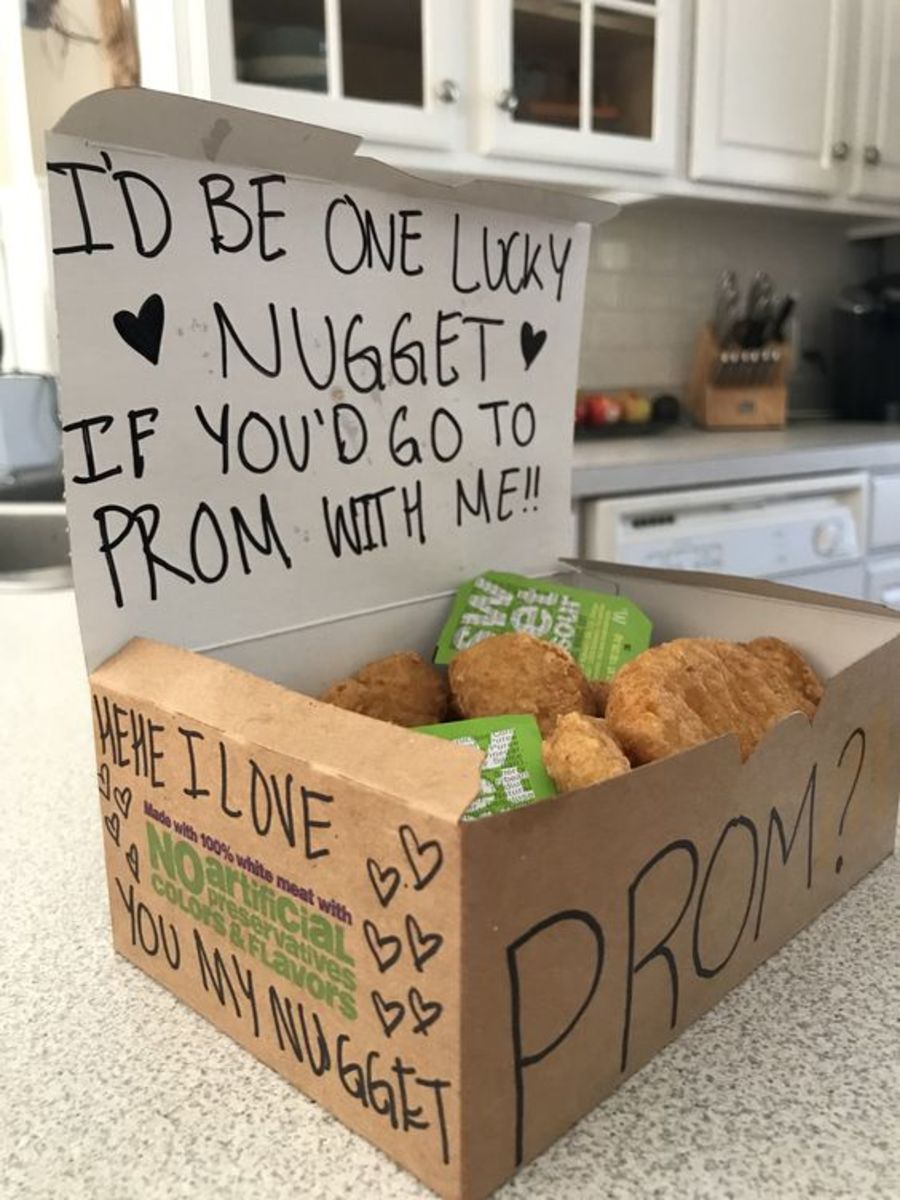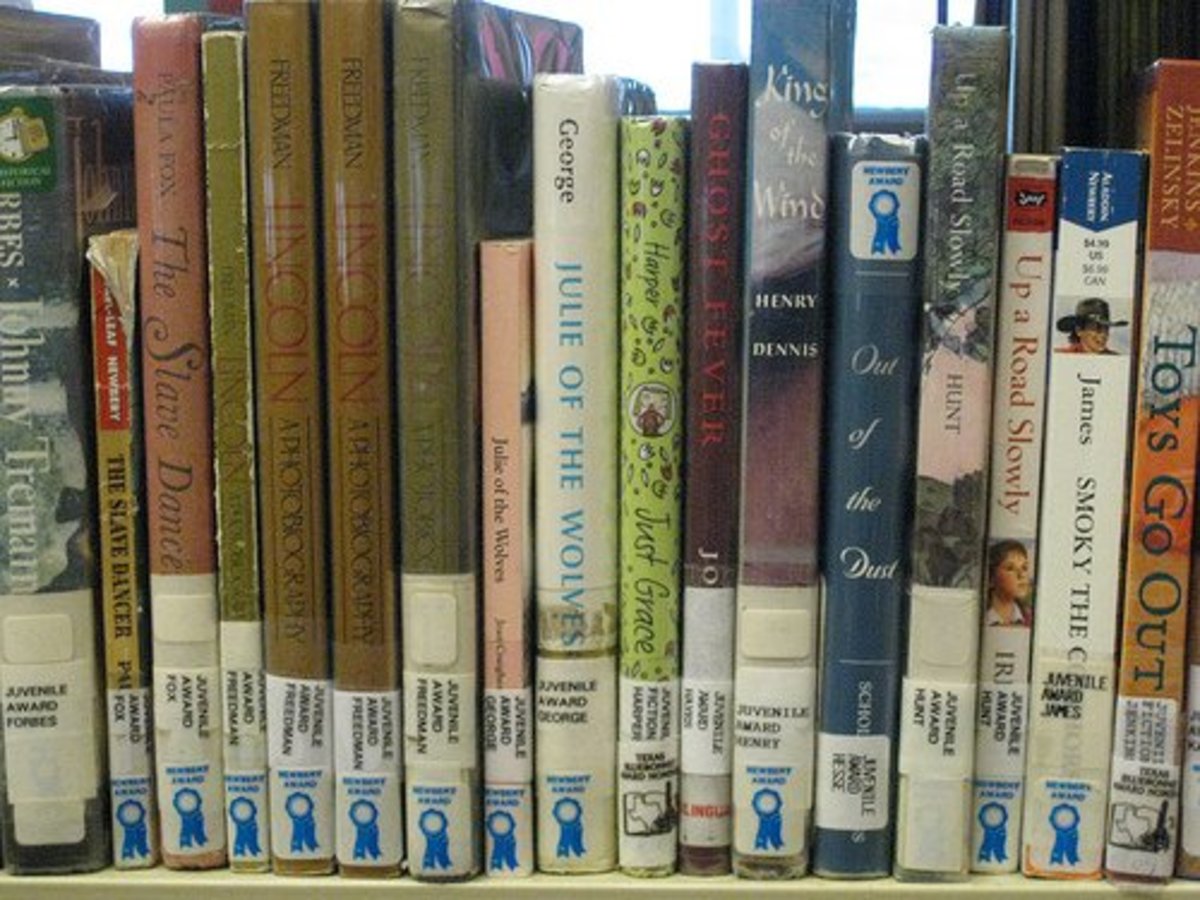Apples in the Tree Tops
Apple Tree Bulletin Board Set
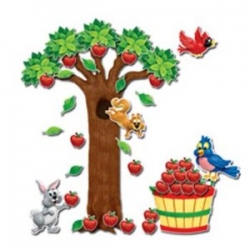
Apple Unit Study
As Autumn arrives, the nights turn colder and the Apples are turning red. They are the inspiration for our next unit study, Apples in the Tree Tops.
In this apple unit study you will learn apple poems and apple recipes.
We will be using all five senses to discover words to describe apples. We will look for the star at the center of each apple and make some heirloom apple butter from the apple trees like the ones that Garner Rix planted for his wife Betsy long ago in the late 1700's.
Come join us for the unit study: Apples in the Treetops...
Language Arts
Using the Apple Theme to teach reading, writing, speaking and listening.
Apples in the Tree Tops
The Apple Poem that Inspired this Unit Study
When I was living and teaching first grade in Costa Rica I was introduced to the poem, Apples in the Treetops. The children loved it and I have been using it to teach beginning readers ever since. It is the inspiration for this Apple Unit Study.
Picking Apples
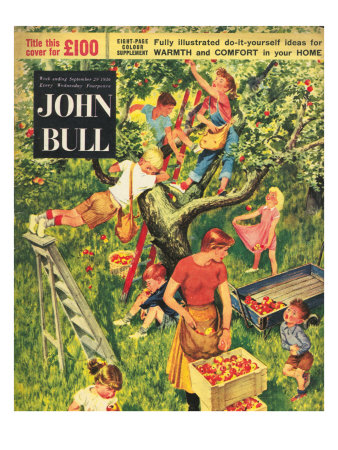
Apples in the Tree Tops
Apples in the Tree Tops
Apples in the tree tops
Apples on the ground
Apples in the kitchen
Apples all around
Apples in a basket
Apples from a tree
Apples for the neighbors
Apples for you and me.
Make a copy of the Apples in the Tree Tops poem on chart paper and laminate it. Post it on a wall where all the kids can see the words and ask the children to recite it with you each morning during circle time. Soon they will know all the words to the poem and will begin to recognize these words all around the room as well as in the books you read with them.
Using a pointer can help children focus on the words that they are reading. Children love to hold the pointer to help the rest of the class follow along. I have a wooden dowel with an apple on the end that we like to use for a pointer.
Apple Bulletin Board
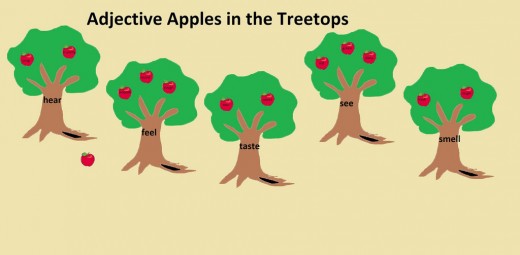
Apples Words in a Basket - Apples Adjectives in the Tree Tops
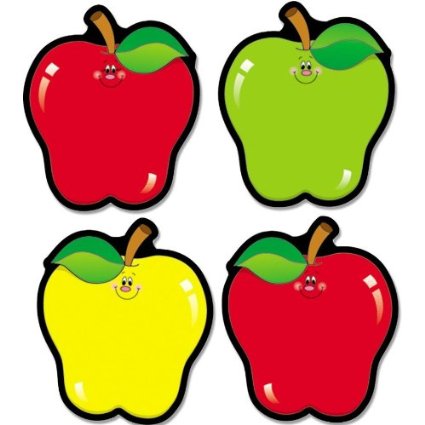
Interactive Apple Tree Bulletin Board
Use the apple accents to write words to describe the apples. You could make five apple trees on a bulletin board. Label the trees See the Apples, Feel the Apples, Smell the Apples, Taste the Apples, Hear the Apples,
Take out a bushel of apples and let each child hold one.
(Note:You might want to remind them that they will be able to eat their apples later on but right now we are observing the apples.)
Adjectives that Describe Apples
Then brainstorm with the children words to write on each of the apples:
See the Apples
- red
- shiny
Feel the Apples
- smooth
- hard
Smell the Apples
- fruity
Taste the Apples
- sour
- tart
Hear the Apples
- crunchy
Write each of these adjectives on an apple and help the children post their apple adjectives on the proper trees on the bulletin board.
Bulletin Board Apple Words
It's time to sort the apples. Use the apple words that you wrote on apple accents in the previous activity. Gather the children near the bulletin board. Talk about the words on each tree. Now begin to remove the apples from the basket. The children need to decide which apples belong to which tree based on whether they describe the way that the apple looks, feels, smells, sounds or tastes.
Tell the children that they will be able to use these words to help them describe apples during Writing Workshop.
Note: I like to use push pins to hold the apples to the trees. That way the children can come up during writing time, choose a word, take it back to their desks to copy it and then easily return it to the correct tree.
Amazon Ad pushpins worms, apples?
Apple Tales - Picture Books for the Apple Unit Study
Each morning we read a picture book about apples. While reading stories we may notice more words that describe apples. These words could be added to the apple words on the bulletin board but be careful not to add so many that the children can't find the ones that they are looking for. You might add these new words as apples that have fallen from the trees.
We also like to read chapter books about apple picking. One of our favorites is Peter and Polly in Autumn. It is a story about a brother and sister growing up in New England in 1914. In this book, Peter and Polly go apple picking. We use this story as a lesson in history or social studies and compare the character's experiences with our own marveling at how some things have changed in the past 100 years but others not at all.
Multi-sensory Apple Investigation - Using Your Five Senses to Describe an Apple
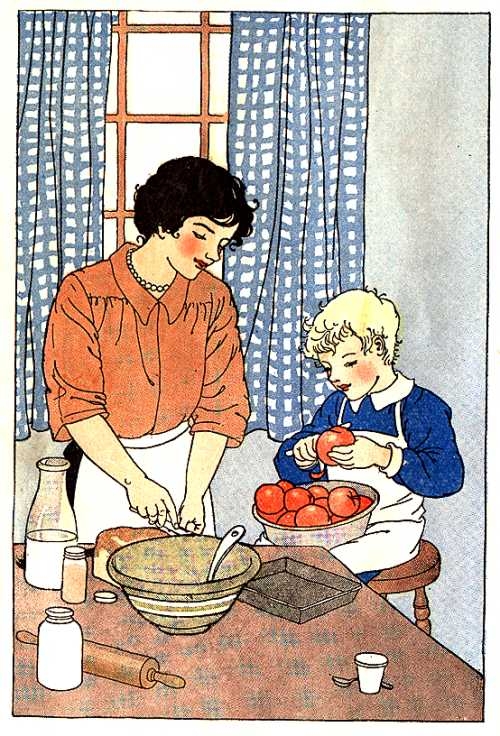
Apples in the Kitchen
Gather the children around the table with an apple, a paring knife, a marker and some apple shaped cards. Use the apple cards to write down words that describe the apple.
Set the apple in the center of the table and ask the children to describe what they see. How many colors are there? What shape is the apple? Are there any spots? How does the stem attach? What's at the other end of the apple?
Now with your eyes closed, pass the apple around. How does the apple feel? Are there any bumps? Is the apple completely smooth or are there rough spots? Can you feel the stem and blossom ends and tell the difference even with your eyes closed?
This time we are going to try to hear the apple. Ask the children for suggestions of ways that we might hear the apple? Try rubbing your finger across the skin, twanging the stem or rustling the blossom end.
Now pass the apple around and ask the children to close their eyes and describe the way the apple smells. How many words can you use to describe how an apple smells?
Finally, listen carefully as the apple is cut open. Can you describe the sound of the apple as it is cut?
Hold a piece of the apple in front of each child so that he or she can smell the fresh cut apple.
Cut out the core and slice the apple into thin slices. Give each child a slice and discuss how the apple tastes.
Save the words that you wrote down in a small apple basket for the following activity.
Apple Adjectives - Reviewing the Words that Describe Apples
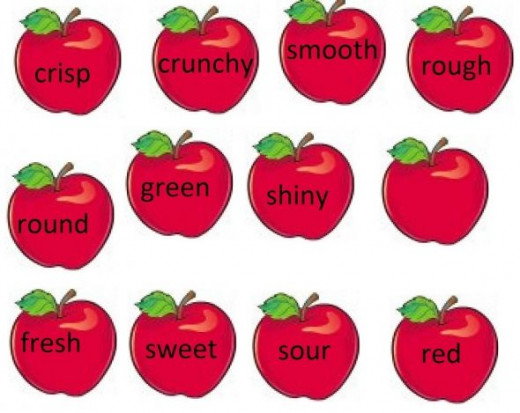
Now each morning during circle time I add a quick activity for reviewing the words that describe apples. Each day I pick 5 children to point to an Apple Word and read it to us. Then we all sing the word to the tune of BINGO.
The Apple Word Song
Sung to the Tune of Bingo
There was an apple on the tree and crisp was it's name-o
C-R-ISP, C-R-ISP, C-R-ISP and Crisp was it's name-o.
There was an apple on the tree and red was it's name-o
R-E-D_, R-E-D_, R-E-D_ and red was it's name-o.
Just change the underlined words for the descriptive words that your children choose from the apple trees.
Apple Science
Apple Dissection - Learning the parts of the Apple
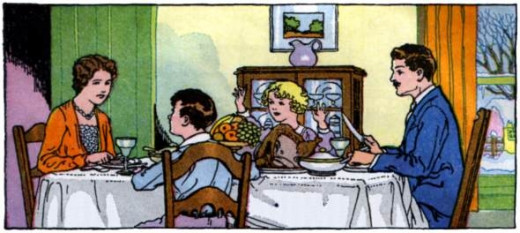
Apple Peelings
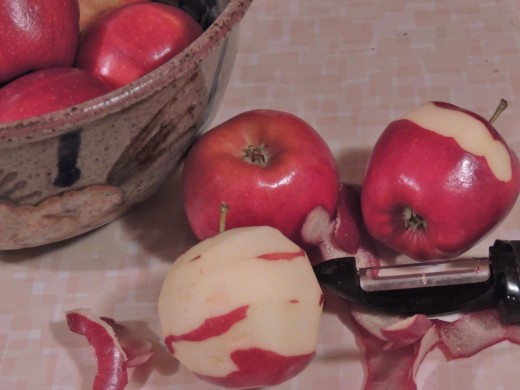
Gather the children around the table and remind them of the way that they used their five senses to discribe an apple. Now we are going to look even closer at the apple.
The apple has many different parts.
Place the apple in the middle of the table. Talk about all the parts of the apple that you can see. Notice where the stem sticks out. See where the leaves attach. Notice the differences between the stem and blossom ends.
Remove the stem and leaves and pass them around for everyone to see.
Peeling an Apple
Next begin to peel the apple. Try to peel just the very outer layer of the skin and you will notice that there is still color to the flesh just under the apple's skin.
Now cut the apple in half from stem end to blossom end. Talk about the two halves of the apple. Notice that there are seeds in the middle of the apple. Then notice where the seed shells or pods are. Notice that these seed shells are hard.
Often when eating an apple it is this seed pod that sticks between your teeth.
Apple Stars - The Star at the Heart of the Apple
Gather the children around the table and tell them that they are going to look for a stars. Each child should have a cutting board and a french knife.
Remind them of how to hold their hands so as not to cut themselves. The children should stand up holding the knife in one hand with the fingers holding the outside edges of the apple. Slip the knife between the fingers and using a slicing motion, cut the apple in half.
Now open the two halves of the apple, did you find the star? Keep trying until someone discovers the star. Can they figure out how they need to cut the apple in order to find the star each time?
Use the apple flesh to make Betsey Rix's Apple Butter.
Apple Math
Look back at the Gail Gibbons book about apples. Look for the part that talks about apple blossoms. How many petals does an apple blossom have?
Now draw a star. How many points does the star have?
Lead children in a discussion to show how the apple blossom with five petals grew to form the apple with five sections for seeds which forms a star shape when cut in half through the fruit which grew from the blossom.
Apple Seed Estimation - Counting Apple Seeds
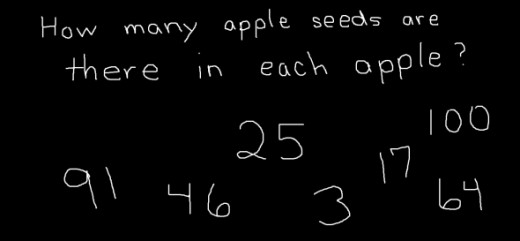
How many seeds do you think there are in each apple?
Record all guesses.
Now start counting the number of seeds found in each child's apple. You can make a graph on the chalkboard or white board and use tally marks to record the number of seeds found by each of the children.
Now that you know how many seeds, on average, there are in each apple. How many seeds do you think you would find in each of the five sections?
If you know how many, on average, are in each section, could you use multiplication to tell how many apple seeds were in each apple after counting only one of the sections? What number would you have to multiply by?
Could you use that information to see how many seeds there are in the whole basket? Now what number would you have to multiply by?
Counting and Multiplying Apple Seeds
Math Mats for the Apple Unit Study
Make math mats from file folders. Glue on red apple shaped felt with white felt forming the star shaped sections.
Children roll a die and place that number of seeds in each section. Then write the multiplication problem that represents the number of seeds in that apple.
Small flat black beads can be used for the apple seeds.
Note: Younger children who are not yet ready to learn multiplication might only count out the seeds for each section.
Note: This activity could be added to an Apple in the Tree Tops Literacy Bag once the children have learned how to play the game.
Social Studies and Apples
Johnny Appleseed
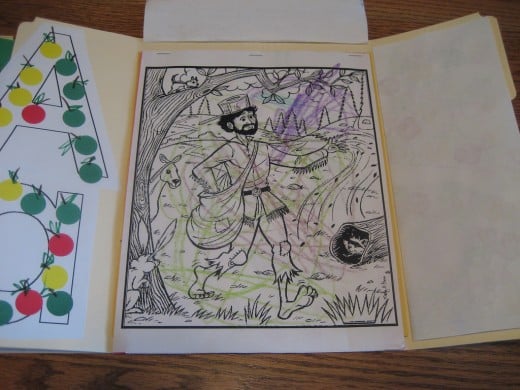
Tales of Johnny Appleseed - Apples Spread across the Country
John Chapman spread seeds and planted apple seedlings from Massachusetts to Kentucky and Missouri. How did the spread of apples effect the lives of the pioneers? Why were apple trees so important to them? Let's learn about the social history of apples...
On a blank map of the United States, color the states that had been formed while John Chapman was spreading his seeds. Use a light colored pencil. Then attach apple cutouts to the states where he spread the seeds. Can you see a pattern?
Apple Butter
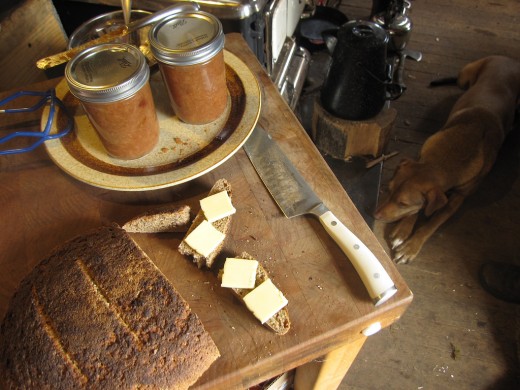
Making Apple Butter
Betsey Rix might have strained the apple butter by putting it through an old tin pan that had started to rust through. People in Vermont never throw out anything, so recycling just comes naturally.
Set up a workbench with an old tin pan, work gloves, safety goggles, an awl and a hammer. This is a loud center so I like to have it just outside the room where I can see the children through a window.
Tinsmith
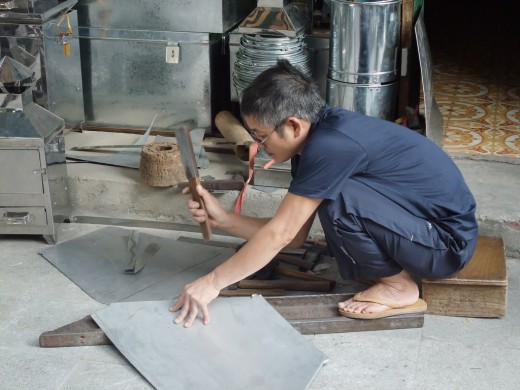
Kids make Applesauce Strainers - Hands-on Apple Themed Activities
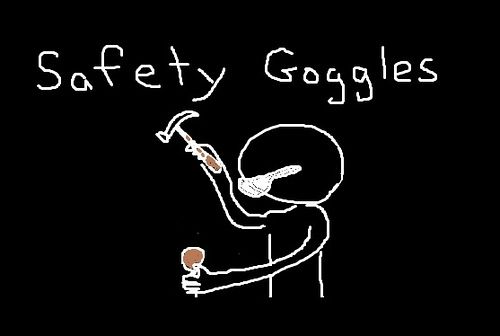
Use Safety Goggles when Making an Apple Sieve
Children pound holes into the bottom of the pans. The pans need to be sitting with their bottoms on a soft wood board such as pine. The awl will go down into the wood but will not damage the table. The boards should be firmly clamped onto the table. One child will hold the pan while other makes a hole with the awl and hammer. After the first child has made a hole, they switch places.
Note: For safety reasons, only two children at a time are allowed in this center.
Making a Food Mill for Apples - Hammering an Awl and Using a Workbench
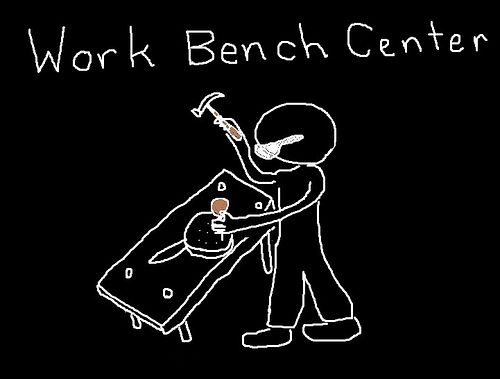
Apple Unit Study Recycling Center
Discuss safety rules with the whole class. Remind each pair of those rules before they go out to the Recycling Center to work.
Children should put on safety goggles and work gloves before working and be instructed in where to place their hands so as not to pound their fingers.
Remind them to keep their heads back and hands out of the way so that no one gets hurt. Some children may need close adult supervision.
Hammering
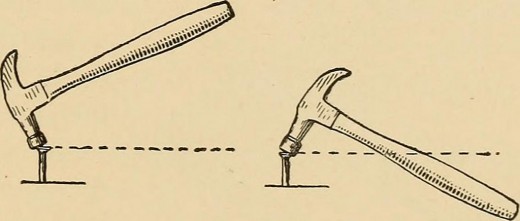
Making a Food Mill for Straining Apples - Apple Equipment Recycling Center
Show the children how to hammer the awl so that the holes that are close to each other without touching.
These pans can later be used to strain apple sauce or turned over for grating apples or cheese. Remember that the bottom side could be very sharp and gloves should be used when grating or washing. I use a vegetable brush to wash the bottom of the pans.
Children learn not only what life was like in times past but also learn to recycle, develop muscles, learn eye-hand coordination as well as learn how to cooperate in order to complete a project.
Old Tin Pans - Make a Food Mill for Apples
Betsey and Garner Rix recycled everything they owned. Give your Kinesthetic learners an activity that will not only keep them moving but strengthen their hand muscles and improve their eye-hand coordination while making a tool for processing apple sauce and apple butter.
Apple Art
Apple Star Prints - Turning Apple Science into Apple Art
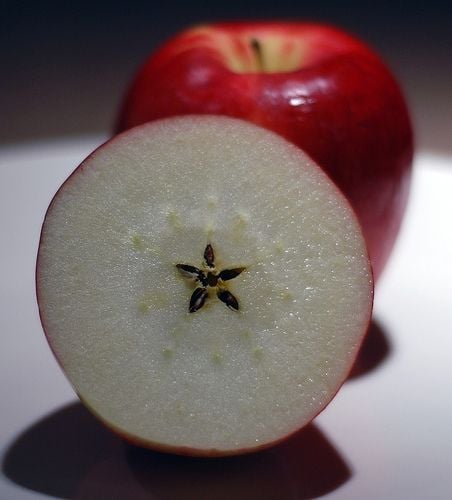
On the Art Table place:
basket of apples
cutting boards
knives
thinned acrylic paint in a shallow tray or cookie sheet
roller
damp cloths for cleaning spills
1. Cut the apple in half to show the apple star.
2. Use the roller to coat the surface of the apple.
3. Press the apple without smearing onto the paper.
4. Lift the apple straight off to reveal the apple print.
5. Hang on a clothes line to dry.
The paper from this project can be used as wrapping paper or to cover journals or stories about apples. It also can made wonderful end papers for books that the children write about apples during Writing Workshop.
Apple Literacy Bag
Apple Literacy Bags
Read books about apples each day. I like to read short fiction and non-fiction books about apples in the morning at circle time and then a longer chapter book after lunch recess. I have multiple copies of our favorite apple books and have used some to create Apple Time Literacy Bag.
Each bag has two books, a non-fiction book about apples and a story about apples. Then I add a couple of educational games that work on skills that the children are learning in reading or math. Finally I add a plush raccoon and a journal where the raccoon can record his adventures while visiting each of the children's houses. Did you know that raccoons love to eat apples?
Children take these Apple Literacy Bags home and have a week to read the stories, play the games and write in the journal. Once they have returned the bag, the children share what they did with the raccoon. These literacy bags have proven to be so much fun for the children as well as their parents that the just beg to take their homework home.
Please let us know which activities you enjoyed the most.




